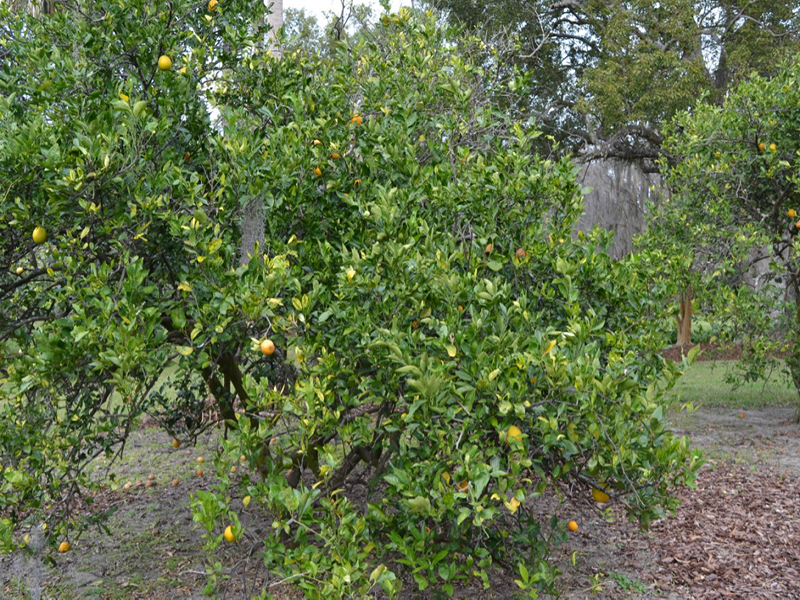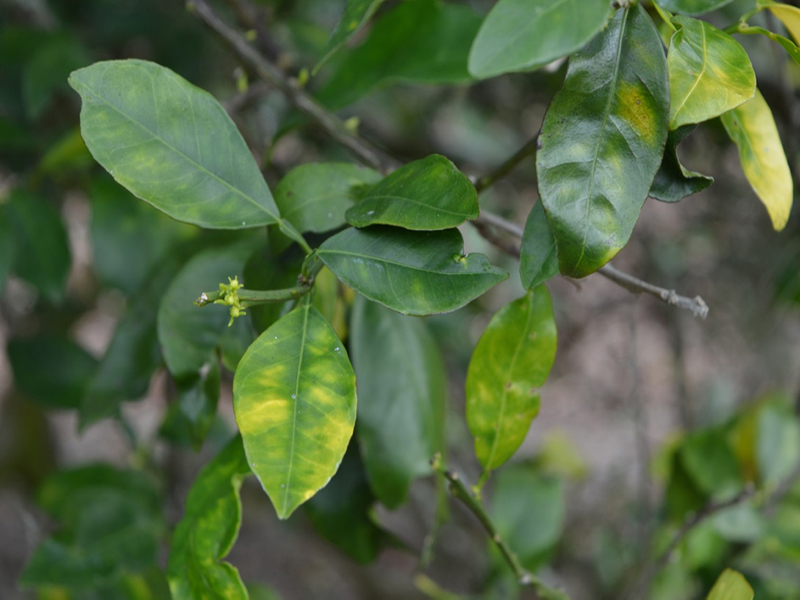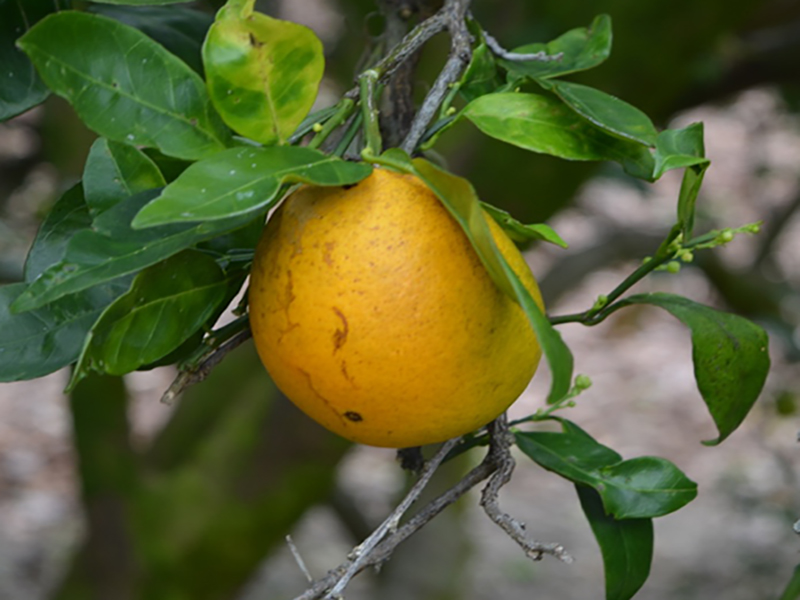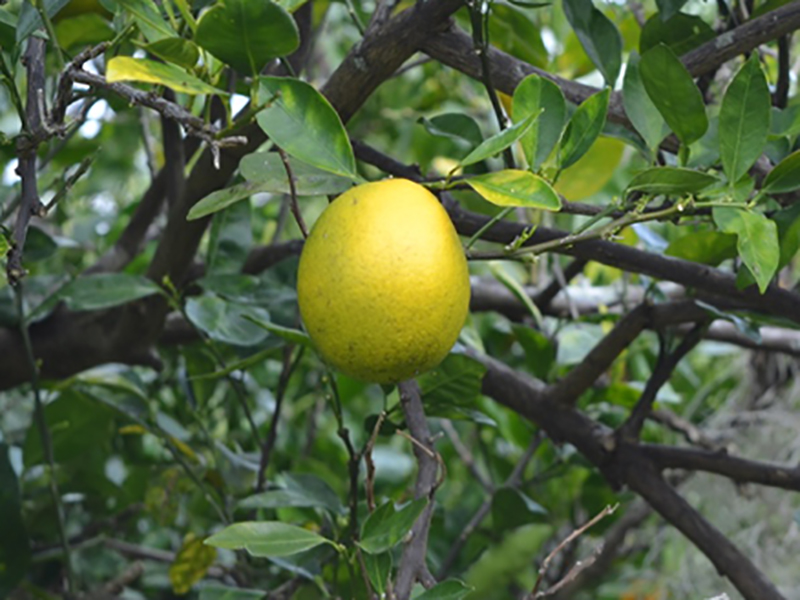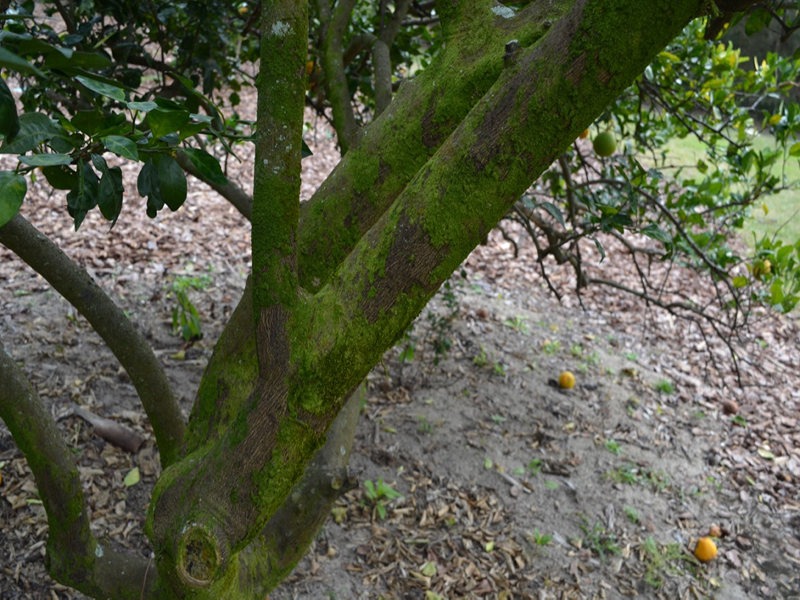
Tropicals, Woody > Citrus > Citrus sinensis > Citrus sinensis 'Navel'
Citrus sinensis
'Navel'
Navel Orange Tree
| Family |
| Rutaceae |
| Genus |
| Citrus |
| Species |
| sinensis |
| Cultivar |
| 'Navel' |
| Category |
| Tropicals, Woody |
| Type |
| Tree (evergreen) |
| USDA Hardiness Zone |
| 9 - 11 |
| Canadian Hardiness Zone |
| Requires cold season protection under glass. |
| RHS Hardiness Zone |
| H1c - H4 |
| Temperature (°C) |
| -10 - 10 |
| Temperature (°F) |
| 14 - 50 |
| Height |
| 4.6 - 7.6 m |
| Spread |
| 4.6 - 7.6 m |
Photographs
Description and Growing Information
Flowering Period
| General Description |
| Trees have glossy green foliage and 4-petalled white fragrant flowers. |
| Cultivation |
| Grows best in full sun in well-drained soil. Let soil dry between waterings. |
| Shape |
| Rounded crown. |
| Growth |
| Medium |
| ID Characteristic |
| Navel oranges are seedless. |
| Pests |
| Mediterranean fruit flies, fungal leaf spots, blights, aphids, sooty mold, root rot, and viruses. Xylella a bacterial disease is a serious threat to many horticultures crops due to its virulence and wide range of species it can infect. It can infect more than 560 species with wide ranging symptoms including leaf scorch, yellowing and scorching, wilt, branch and twig dieback and plant death. These symptoms can be identical to other symptoms such as drought and weather stress. Infected plants show symptoms within a few years after planting. |
| Bark/Stem Description |
| The tree naturally has multiple trunks but can be trained to form a single stem. Branches are thorny. |
| Leaf Description |
| Shape ranges from oblong to oval. 6.5 - 15 cm long and 2.5 - 9.5 cm wide, often with narrow wings on the petioles. |
| Flower Description |
| Fragrant, produced in clusters; bloom time is spring and winter. |
| Fruit Description |
| The fruits are easy to peel and the slices separate easily. |
| Texture Description |
| Leaves are leathery and glossy. |
| Notable Specimens |
| Pinewood Estate, Bok Tower Gardens, Lake Wales, Florida, United States of America. |
| Propagation |
| Navel oranges can be propagated through cuttings and grafting. |
| Ethnobotanical Uses (Disclaimer) |
| Eaten fresh, used in juice and a variety of desserts. |
